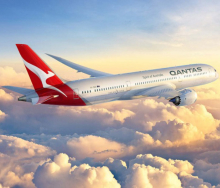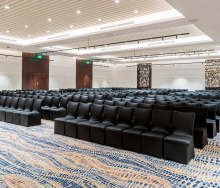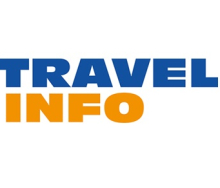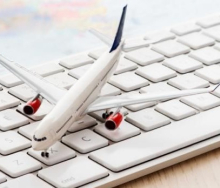SAA plans to lower its
fares, fill up its planes,
boost capacity and
improve its operational
efficiencies in order to grow
its business, says chief
commercial officer, Sylvain
Bosc.
Speaking at a Satsa
Western Cape chapter
meeting in Cape Town, he
said SAA was making quick
progress in tackling its
revenue problems and the
“road ahead is clear” now
that it was no longer subject
to conflicting mandates but
had one clear instruction
from Treasury to become
profitable.
SAA is now empowered
to act on a strategy already
devised two-and-a-half years
ago but never implemented
because of governance
challenges. The airline has
also rebuilt its commercial
team with experienced airline
staff and is restructuring its
domestic market business.
“I am very confident that you
will hear a lot more good
news from SAA in the next
few months and years,” said
Sylvain.
He said network cuts
– such as the March 29
withdrawal from major lossmaking
routes Beijing and
Mumbai – would halve SAA’s
operating losses. “Although
we have 80% load factors
[on the India route], the
yields are so low that we
lose money on every flight;
we’re not even covering
the operating costs of the
services. So the earlier we
stop flying there, the better.”
Although Hong Kong is
loss-making, SAA is fighting
to keep the route, its last
remaining Asian route, by
offering more competitive
fares. Axing Hong Kong
would damage SAA’s São
Paulo services because of
through traffic from Brazil,
he said.
Emirates vs Etihad
Sylvain also shed light
on SAA’s unique dual
codesharing relationships
with rival UAE carriers,
Emirates and Etihad, and its
plans with the Abu Dhabibased
airline. While SAA
intends to maintain its longstanding
codeshare with
Emirates, it does not give
SAA reach beyond Dubai on
Emirates’ global network, nor
is Emirates prepared to let
SAA operate its flights to SA.
Etihad, meanwhile, is willing
to operate on an equal basis
hub-to-hub, allowing SAA to
extend its reach and gain
access to attractive fares
on Etihad’s network to Asia.
Etihad, in turn, gains access
to African regional traffic.
“We have not abandoned
Emirates. It’s not a political
but a business decision.”
He said it had become
impossible for SAA to
operate to Asia because
its direct flights could not
compete with the Gulf
carriers.
Ebola fears were also
affecting SAA and United
Airlines’ codeshare flights
from Washington DC,
said Sylvain, because US
passengers avoided routing
via Dakar and preferred
to fly via the Gulf. He said
SAA and Etihad’s codeshare
allowed passengers to clear
US immigration at Abu Dhabi
airport’s US Immigration PreClearance
facility and arrive
at a domestic terminal in
the US.
SAA’s London flights
were breaking even and
its Frankfurt and Munich
services were profitable,
said Sylvain. Consequently,
SAA had no plans to cut its
European routes, especially
since it had re-negotiated
reduced leasing costs of
the fuel-guzzling four-engine
A340s used on those
routes.
He said there was “not
too much appetite in
Pretoria” for new routes,
as these took two to three
years to become profitable.
“Treasury has made it clear
that there is no money
coming our way.”
SAA ‘no longer subject to conflicting mandates’
20 Apr 2016 - by Hilka Birns
Comments | 0













